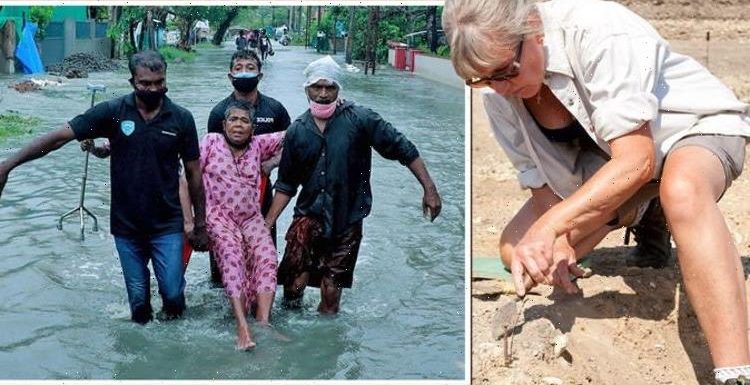
Britain’s Pompeii: Archaeologists excavate Bronze Age settlement
We use your sign-up to provide content in ways you’ve consented to and to improve our understanding of you. This may include adverts from us and 3rd parties based on our understanding. You can unsubscribe at any time. More info
Tutankhamen’s tomb, Machu Picchu and China’s terracotta warriors are all examples of remnants from the past that archaeologists have helped to uncover. The study has existed for more than a century, and now looks poised to turn its attention from the past to the future, and help to contribute to discussions on climate change. So, how exactly is it managing to do this and what does the future hold for archaeology?
In recent weeks, archaeology has made headlines across the UK following several discoveries that have been hailed for their historical significance.
For the first time, physical evidence of a Roman crucifixion in Britain was unearthed last week, by researchers who were investigating land due to be built on by a housing development.
A ‘once in a lifetime’ discovery of a Bronze Age Axe was also made, in November, by a 13-year-old metal detectorist.
Nonetheless, as the original faculties of archaeology continue to deliver wonder after wonder, the study is evolving in more than one way.
In fact, one of the key developments it’s making is in relation to climate change – but how is this possible?


Neil Redfern, Executive Director of the Council for British Archaeology, has spent his career working within the science.
He explained how archaeology is capable of these changes because it’s a “contemporary subject”.
Speaking to Express.co.uk he said: “If you think about archaeology, we normally study stuff that’s been lost or deliberately thrown away or has suffered some catastrophe.
“We study the process of loss. Well actually that makes us understand why things fail.

“So, it gives us a really good set of questions to start posing to society today about what the impact of climate change is going to be and what the impact of societal changes are going to be.
“What we do is we try to use evidence of the totality of human existence to understand how we’ve survived to this moment in time.”
He explained that we can use evidence of how humans lived in the past – that was discovered by archaeologists – to understand how we could be impacted by climate change and potentially move through it.
DON’T MISS:
Musk humiliated as Cybertruck’s ‘comically large’ flaw exposed [EXPLAINED]
Brexit: EU Rejoiners’ hopes dashed as new countries ‘must join Euro’ [INSIGHT]
Blue Wall to COLLAPSE? Boris issued by-election warning [ANALYSIS]

Today, archaeologists use a range of technology to assist ongoing excavations – including drones to conduct land surveys and x-ray machines to gain in-depth details of artefacts.
As technology continues to advance and assume a leading role in archaeology, Mr Redfern believes that humans will always be needed to provide real value to discoveries.
He said: “Technology has had a profound impact on archaeological thoughts and processes. That is not slowing down but the beauty of it is you will always need a human to translate that.
“It’s the human who scribes the value to objects. Whatever you do, it will always come back to what relevance that has to us as human beings.”
Some of the most significant archaeological finds to have ever been made have come from the British Isles.
For instance, in 2009, 4,500 fragments of war gear and religious objects were discovered that were later found to date back to the seventh century.
The haul was dubbed the Staffordshire Hoard and in total amounted to 4kg of gold and 1.5kg of silver.
In 2001, a metal detectorist discovered what would become known as the Ringlemere Cup.
At more than 3,500 years old the artefact helped to shed light on what it would have been like to live in that point of history and is now on show at the British Museum.
Source: Read Full Article